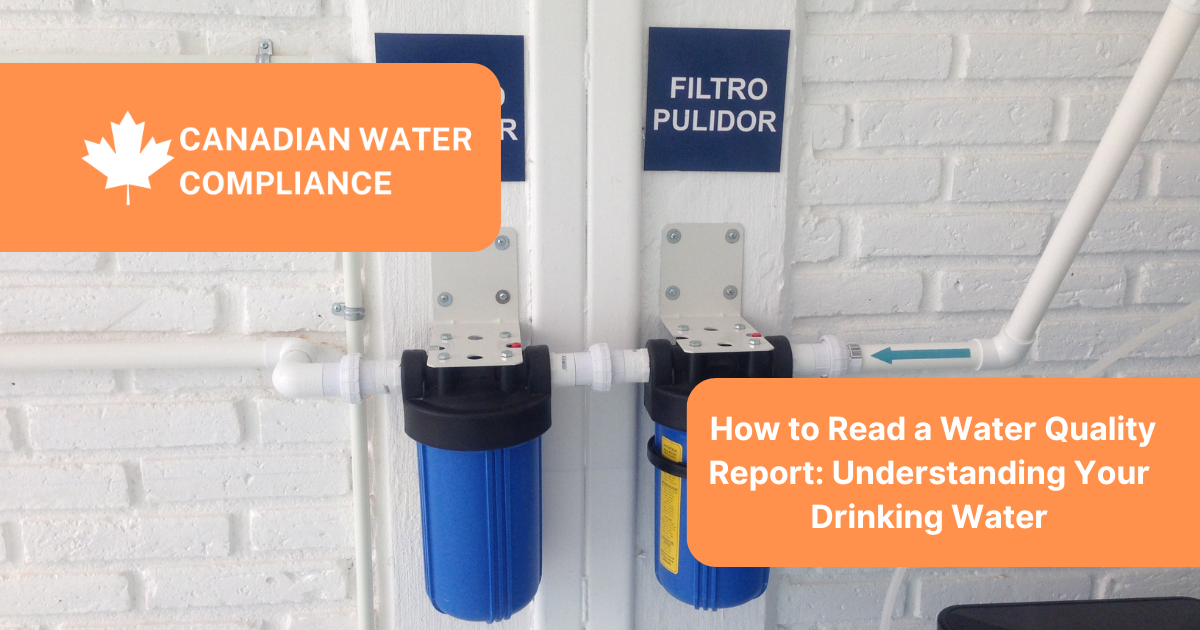
Written By: Canadian Water Compliance | On
With increasing concerns about water contamination, chlorine taste, and heavy metals, many homeowners and businesses are turning to water filtration systems to ensure safe and great-tasting drinking water. But with so many options—activated carbon, reverse osmosis, UV purification, and more—how do you know which filter is right for you?
Choosing the right water filter depends on your specific water quality issues. For example:
✔ Concerned about chlorine taste? A carbon filter may be enough.
✔ Worried about lead or nitrates? You’ll need reverse osmosis.
✔ Dealing with well water bacteria? UV purification is key.
This guide will help you understand the different types of water filters, what they remove, and which one is best for your needs.
✅ Common water contaminants and how to remove them
✅ The different types of water filters and how they work
✅ Which filter is best for your home or business
Before choosing a water filter, you need to identify what’s in your water. Here are some of the most common contaminants and their health effects:
Contaminant | Common Sources | Health Risks | Best Filter Type |
|---|---|---|---|
Chlorine & Chloramine | Municipal water disinfection | Skin irritation, bad taste & odor | Activated Carbon |
Lead | Old pipes & plumbing | Neurological damage, developmental issues in children | Reverse Osmosis (RO), Carbon Block |
Nitrates & Nitrites | Fertilizers, septic systems | "Blue baby syndrome," increased cancer risk | Reverse Osmosis |
Bacteria & Viruses | Well water, stagnant plumbing | Gastrointestinal illness, Legionnaires’ disease | UV Purification |
PFAS ("Forever Chemicals") | Industrial waste, non-stick cookware | Cancer risk, hormone disruption | Reverse Osmosis, Activated Carbon |
Hard Water (Calcium & Magnesium) | Groundwater, well water | Scaling in pipes, dry skin & hair | Water Softener |
Iron & Manganese | Groundwater, corroded pipes | Rust stains, plumbing damage, metallic taste | Oxidation, Water Softener |
📌 Pro Tip: Test your water first before buying a filter. If you’re on municipal water, check your local Water Quality Report. If you have a private well, get a professional water test.
There are several different filtration technologies available, each designed to remove specific contaminants.
✔ Removes: Chlorine, chloramine, some pesticides, and VOCs
✔ Improves: Taste and odor
⚠️ Does NOT remove: Heavy metals, nitrates, bacteria, or dissolved solids
📌 Best for: Homeowners on municipal water looking to improve taste and remove chlorine.
🛠 Common Systems:
Faucet-mounted filters (e.g., Brita, PUR)
Under-sink carbon block filters
Whole-house carbon filters
✔ Removes: Heavy metals (lead, arsenic), nitrates, PFAS, fluoride, and microplastics
✔ Provides: Highly purified water
⚠️ Does NOT remove: Bacteria and viruses (unless paired with UV)
📌 Best for: Homes with high levels of lead, nitrates, or PFAS contamination.
🛠 Common Systems:
Under-sink RO filters
Whole-house RO systems (for extreme cases)
💡 Did you know? Reverse osmosis removes beneficial minerals too—some systems add them back using a remineralization filter.
✔ Removes: E. coli, Giardia, Cryptosporidium, and other pathogens
✔ Works: By exposing water to ultraviolet light, which kills microorganisms
⚠️ Does NOT remove: Heavy metals, chlorine, nitrates, or chemicals
📌 Best for: Private wells and rural properties where bacterial contamination is a concern.
🛠 Common Systems:
Whole-house UV disinfection systems
Inline UV filters for under-sink use
💡 UV is often combined with carbon or RO filtration for complete water safety.
✔ Removes: Calcium, magnesium, iron, and manganese
✔ Prevents: Pipe scaling, appliance damage, and soap scum buildup
⚠️ Does NOT remove: Bacteria, chemicals, or heavy metals
📌 Best for: Homes with hard water or high iron/manganese levels.
🛠 Common Systems:
Salt-based ion exchange water softeners
Salt-free conditioning systems
💡 Concerned about added sodium? Use potassium chloride pellets instead of sodium chloride.
Now that you know the different types of filters, here’s a quick guide to selecting the best one based on your needs:
Water Issue | Best Filtration Option |
|---|---|
Bad taste & chlorine odor | Activated Carbon Filter |
Lead or PFAS contamination | Reverse Osmosis (RO) |
Well water bacteria risk | UV Purification |
Hard water & mineral buildup | Water Softener |
High nitrates from agriculture | Reverse Osmosis (RO) |
Heavy metals (iron, manganese) | Oxidation & Filtration |
📌 Tip: For the best water quality, many homeowners use a combination of filtration methods (e.g., RO + UV for well water, or Carbon + Softener for city water).
Choosing the right water filter depends on your water source and specific concerns.
✔ Activated Carbon improves taste and removes chlorine.
✔ Reverse Osmosis removes lead, nitrates, and PFAS contaminants.
✔ UV Purification is essential for well water with bacteria risks.
✔ Water Softeners prevent scaling and extend appliance life.
✔ Testing your water first ensures you pick the right system for your needs.
🔎 Need help choosing a water filter? Contact Canadian Water Compliance for professional testing and filtration solutions!